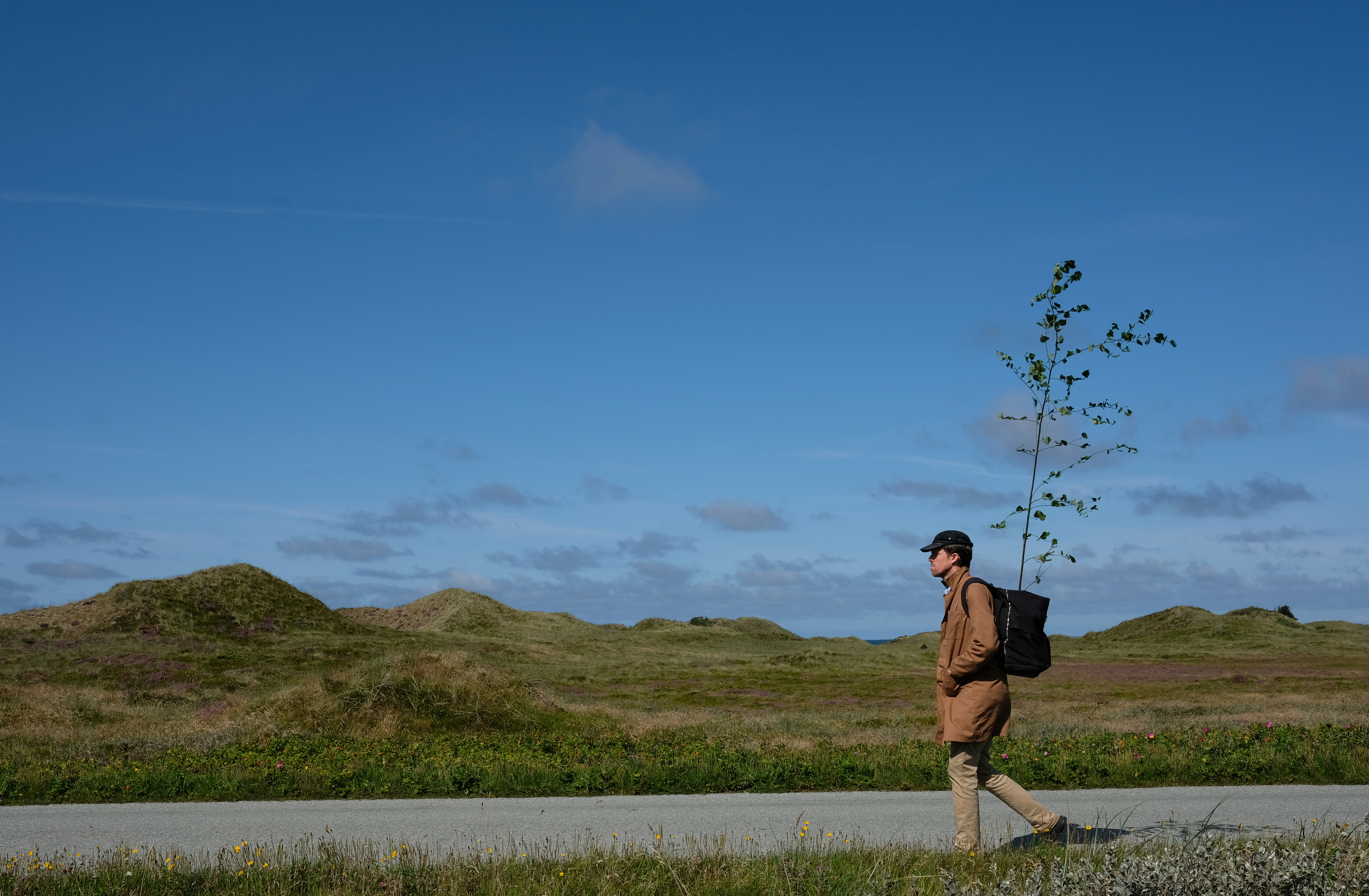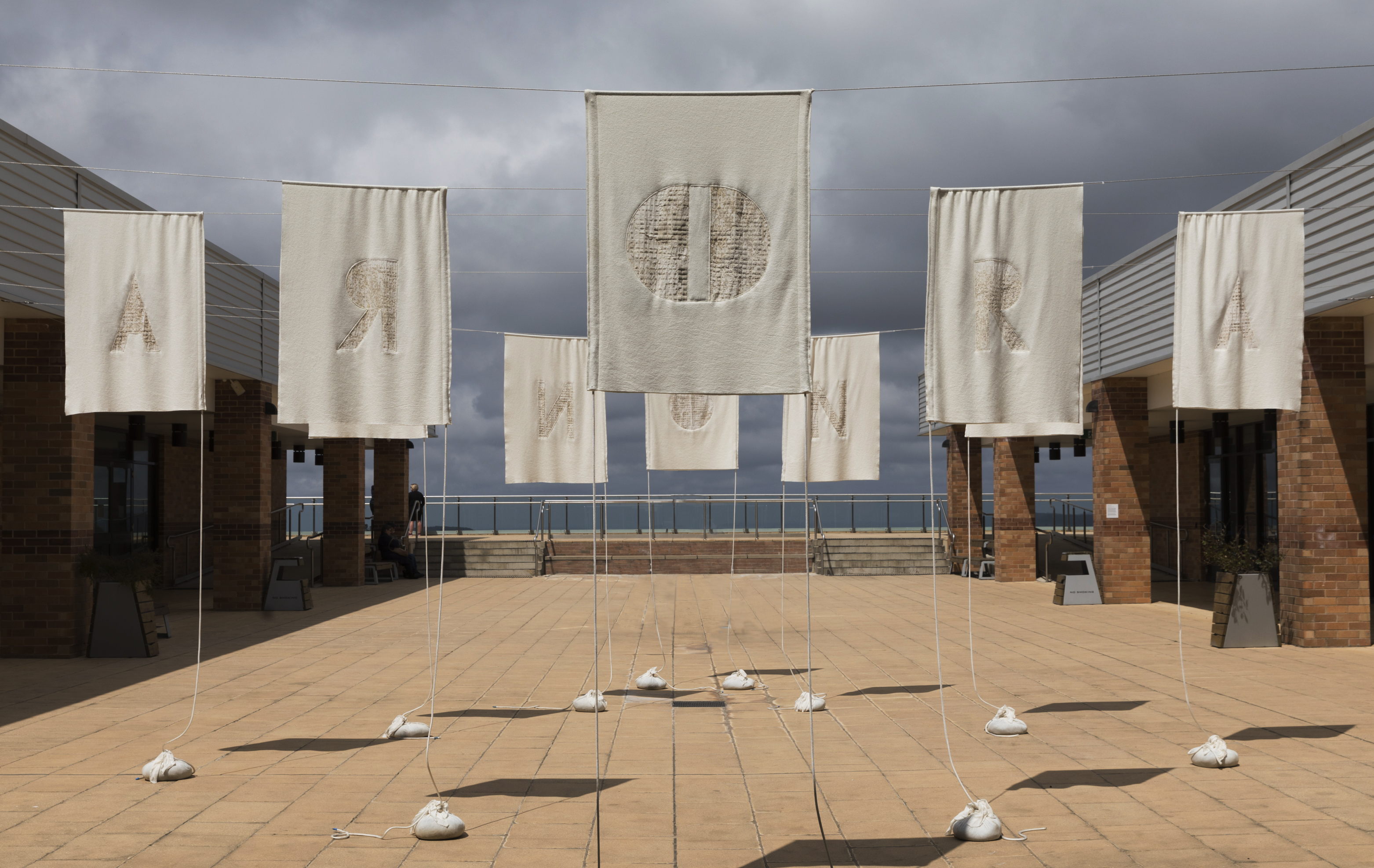Plant Agents
What agency do plants have?
What if humans acted altruistically for the benefits of the plant world?
How would we behave?
These three projects presented below explore these questions through props, artifacts and devices.
How would we behave?
These three projects presented below explore these questions through props, artifacts and devices.


The Visitors: An Exercise in Plant Agency
Cypress & gum trees, biodegradable plastic, soil, plant seeds, steel, leather, construction scrim, video.
MAMA Albury and Blue Mountains City Art Gallery.
This exhibition explores what can of devices humans would need and how humans may behave differently if they were to become plant agents.
Plants mostly seem to recede into the background, the base and stage for the lives of faster moving creatures like us. Yet we depend entirely and absolutely on the lives and labours of the plant world. We are here because they are here.
If we are their guests, we are rather inconsiderate ones. We farm them, we garden them, we prune and transplant them. We harvest them and process them. We eat them and wear them. We use their bodies to house ourselves. Like unwanted visitors we depend much on our hosts to support our endeavours and we take much more than we return.
Read review of The Visitors by Running Dog by Carolyn Burns:
“There’s a charming absurdity to many of the individual pieces that make up Heidi Axelsen and Hugo Moline’s The Visitors, a deceptively simple installation on eco futurist themes. There’s footage of a sapling being carried along a country road in a backpack like an infant in a baby carrier, a porous net veil that enables exhaled carbon dioxide to be shared between one person and a specific plant, and an elaborately engineered copper funnel for collecting urine to water the roots of trees.”


Plant Nation
Biodegradable plastic, plant seeds, felt, timber dowel, galvanised fitttings. Brisbane City Botanic Gardens, commissioned by Ineke Dane at UAP.
Plant Nation was a newly commissioned work which played with the idea of the agency of plants, and nationhood as plants would define it. Unlike human nations, its various nationalities, its ‘species-beings’, do not require exclusive control of land and territory. Rather the nations overlap and are interwoven in complex ecologies. We constructed a futureruin on which flags of the Plant Nation were hoisted. Unlike human flags the flags of the Plant Nation were fragile and impermanent, made of biodegradable plastic and felt, containing within their fabric the seeds of expansion – the seeds of endemic species. They staged this installation semi-submerged in a lagoon of the Botanic Gardens amongst plant and animal life.
Botanica 2019, BAD festival

DRAWNONWARD
Plant seeds, earth, bags, rope, felt, biodegradable plastic.
Blue Mountains Cultural Centre.
Commissioned as part of Critical Mass: The Art of Planetary Health at Blue Mountains Cultural Centre curated by Sabrina Roesner.
Speaking as a species, we are certainly having some problems relating to the Earth. Perhaps this might be a good time to consider some other ways to relate with her?
For a while now we have felt the need to mark out bits of the Earth as belonging to me or you or us or them. Flags become symbols of this humanised territory, from real-estate to the nation-state, they stake a claim of permanent possession.
Plants consider territory in a very different way. Plants claim land with their bodies alone. They do not own, they just reside. Unlike ours these claims do not require exclusivity. Rather their nations overlap, are interwoven and concurrent.
Learning from the plants we would like to propose more soluble forms ownership. If you are here, its yours for the moment you are here (together with whoever else is here of course).
In DRAWNONWARD ten flags mark out a small territory, a little United Nations of dirtbags. Unlike the flags of human nations these flags are designed to decompose. Their substance aiding the growth of the seeds which they contain. The seeds have been gathered from roadside weeds, species which claim leftover terrain, species which will be the first to take over after our departure.
Like the palendrome, drawn onward: in order to move forward we need to constantly return.

